Art Creepy Victorian Teenage Girl in Bed Gown Long Black Hair
/https://tf-cmsv2-smithsonianmag-media.s3.amazonaws.com/filer/f3/4c/f34c1423-860e-4e83-8c8c-45ec5261e4f9/istock_000013039030_large.jpg)
Pollock'southward Toy Museum is one of London's loveliest minor museums, a creaking Dickensian warren of wooden floors, low ceilings, threadbare carpets, and steep, winding stairs, housed in ii connected townhouses. Its pocket-size rooms firm a large, haphazard collection of antique and vintage toys – tin can cars and trains; board games from the 1920s; figures of animals and people in wood, plastic, lead; pigment-chipped and faintly dangerous-looking rocking horses; stuffed teddy bears from the early 20th century; even – purportedly – a 4,000 year one-time mouse fashioned from Nile dirt.
And dolls. Dolls with "sleepy eyes", with staring, glass eyes. Dolls with porcelain faces, with "truthful-to-life" painted ragdoll faces, with mops of real hair atop their heads, with no hair at all. One-hundred-and-l-year-onetime Victorian dolls, rare dolls with wax faces. Dolls with cheery countenances, dolls with stern expressions. Sweetness dolls and vaguely sinister dolls. Skinny Dutch wooden dolls from the end of the 19th century, dolls in "traditional" Japanese or Chinese wearing apparel. Ane glassed-off nook of a room is crammed with porcelain-faced dolls in 19th-century clothing, sitting in vintage model carriages and propped up in wrought atomic number 26 bedsteads, as if in a miniaturized, overcrowded Victorian orphanage.
Some visitors to the museum, nevertheless, can't manage the doll room, which is the terminal room before the museum's exit; instead, they trek all the mode back to the museum's entrance, rather than go through. "It just freaks them out," says Ken Hoyt, who has worked at the museum for more than than vii years. He says it'southward ordinarily adults, not children, who can't handle the dolls. And it happens more than often during the winter, when the sunday goes downwards early and the rooms are a bit darker. "It's similar you'd call back they've gone through a haunted business firm… It'southward non a dandy way to terminate their visit to the Pollock'due south Toy Museum," he says, laughing, "because anything else that they would have seen that would accept been charming and wonderful is totally gone now."
A fear of dolls does have a name, pediophobia, classified under the broader fearfulness of humanoid figures (automatonophobia) and related to pupaphobia, a fear of puppets. Merely about of the people fabricated uncomfortable by the doll room at Pollock'due south Toy Museum probably don't suffer from pediophobia so much every bit an easy-to-laugh-off, frequently culturally reinforced, unease. "I think people simply dismiss them, 'Oh, I'one thousand scared of dolls', virtually humorously – 'I tin't expect at those, I hate them,' laughingly, jokingly. Most people come down laughing and proverb, 'I hated that final room, that was terrible,'" Hoyt says. Dolls – and it must exist said, not all dolls – don't actually frighten people so much as they "creep" them out. And that is a different emotional land all together.
Encounter Besides: Read almost the history and psychology of scary clowns
Dolls have been a part of human being play for thousands of years – in 2004, a 4,000-twelvemonth-quondam rock doll was unearthed in an archeological dig on the Mediterranean island of Pantelleria; the British Museum has several examples of ancient Egyptian rag dolls, made of papyrus-stuffed linen. Over millennia, toy dolls crossed continents and social strata, were made from sticks and rags, porcelain and vinyl, and have been found in the hands of children everywhere. And by virtue of the fact that dolls are people in miniature, unanimated by their own emotions, information technology'due south easy for a society to projection any it wanted on to them: Just as much equally they could exist made out of anything, they could be made into annihilation.
"I recollect there is quite a tradition of using dolls to reflect cultural values and how we see children or who nosotros wish them to be," says Patricia Hogan, curator at The Strong National Museum of Play in Rochester, New York, and associate editor of the American Periodical of Play. For example, she says, by the end of the 19th century, many parents no longer saw their children as unfinished adults, but rather regarded babyhood as a fourth dimension of innocence that ought to exist protected. In turn, dolls' faces took on a more cherubic, celestial look. Dolls also have an instructional office, ofttimes reinforcing gender norms and social behavior: Through the eighteenth and 19th century, dressing upwards dolls gave trivial girls the opportunity to learn to sew or knit; Hogan says girls also used to deed out social interactions with their dolls, non merely the classic tea parties, but also more than complicated social rituals such as funerals also. In the early on 20th century, right effectually the time that women were increasingly leaving the home and entering the workplace, infant dolls became more popular, inducting young girls into a cult of maternal domesticity. In the second half of the 20th century, Barbie and her myriad career (and sartorial) options provided girls with alternative aspirations, while activity figures offered boys a socially acceptable style to play with dolls. The recent glut of male child-crazy, bizarrely proportioned, hyper-consumerist girl dolls (think Bratz, Monster High) says something about both how society sees girls and how girls see themselves, although what is for another discussion.
So dolls, without significant to, mean a lot. But ane of the more relatively recent ways we relate to dolls is equally strange objects of – and this is a totally scientific term – creepiness.
Research into why we think things are creepy and what potential utilize that might accept is somewhat limited, but it does be ("creepy", in the modernistic sense of the discussion, has been around since the middle of the 19th century; its first appearance in The New York Times was in an 1877 reference to a story about a ghost). In 2013, Frank McAndrew, a psychologist at Knox College in Illinois, and Sara Koehnke, a graduate student, put out a small paper on their working hypothesis about what "creepiness" ways; the paper was based on the results of a survey of more than 1,300 people investigating what "creeped" them out (collecting dolls was named as i of the creepiest hobbies).
Creepiness, McAndrew says, comes down to incertitude. "You're getting mixed messages. If something is clearly frightening, you scream, you run away. If something is disgusting, you know how to deed," he explains. "But if something is creepy… it might be unsafe simply you're not sure information technology is… there's an ambivalence." If someone is acting outside of accepted social norms – continuing likewise close, or staring, say – we get suspicious of their intentions. But in the absence of real evidence of a threat, we wait and in the meantime, call them creepy. The upshot, McAndrew says, is that being in a state of "creeped out" makes you "hyper-vigilant". "Information technology actually focuses your attention and helps you lot procedure any relevant data to help you determine whether there is something to be afraid of or not. I actually think creepiness is where nosotros respond in situations where we don't know take plenty information to respond, but we take plenty to put us on our baby-sit."
Human survival over endless generations depended on the avoidance of threats; at the same fourth dimension, humans thrived in groups. The creeped out response, McAndrew theorized, is shaped by the twin forces of being attuned to potential threats, and therefore out-of-the-ordinary beliefs, and of being wary of rocking the social boat. "From an evolutionary perspective, people who responded with this creeped out response did better in the long run. People who didn't might have ignored dangerous things, or they're more probable to jump to the wrong decision likewise speedily and exist socially ostracized," he explains.
Dolls inhabit this area of uncertainty largely because they look homo but we know they are not. Our brains are designed to read faces for important information most intentions, emotions and potential threats; indeed, we're so primed to come across faces and answer to them that we see them everywhere, in streaked windows and smears of Marmite, toast and assistant peels, a phenomenon under the catchall term "pareidolia" (attempt not to encounter the faces in this I Run across Faces Instagram feed). However much we know that a doll is (probable) non a threat, seeing a face that looks man but isn't unsettles our nearly bones human instincts.
"We shouldn't exist afraid of a little piece of plastic, but it's sending out social signals," says McAndrew, noting also that depending on the doll, these signals could just as easily trigger a positive response, such equally protectiveness. "They look like people but aren't people, so we don't know how to respond to information technology, just like we don't know how to respond when nosotros don't know whether there is a danger or not... the globe in which we evolved how nosotros process information, there weren't things like dolls."
Some researchers also believe that a level of mimicry of nonverbal cues, such as mitt movements or trunk language, is fundamental to polish human interaction. The primal is that it has to be the right level of mimicry – as well much or too trivial and we get creeped out. In a study published in Psychological Science in 2012, researchers from the University of Groningen in the netherlands found that inappropriate nonverbal mimicry produced a physical response in the creeped out subject: They felt chills. Dolls don't have the ability to mimic (although they do seem to take the power to make eye contact), but considering at to the lowest degree part some part of our encephalon is suspicious nearly whether this is a human or not, we may expect them to, further confusing things.
You lot can't talk about creepy dolls without invoking the "uncanny valley", the unsettling identify where creepy dolls, similar their robot cousins, and before them, the automatons, reside. The uncanny valley refers to the idea that human react favorably to humanoid figures until a betoken at which these figures become besides human being. At that signal, the small differences between the human and the inhuman – maybe an awkward gait, an inability to use advisable center contact or spoken language patterns – go amplified to the point of discomfort, unease, disgust, and terror. The idea originated with Japanese roboticist Masahiro Mori's 1970 essay anticipating the challenges robot-makers would face. Although the championship of the paper, "Bukimi No Tani", is really more than closely translated equally "valley of eeriness", the word "uncanny" hearkens back to a concept that psychiatrist Ernst Jentsch explored in 1906 and that Sigmund Freud described in a 1919 newspaper, "The Uncanny". Though the two differed in their interpretations – Freud's was, unsurprisingly, Freudian: the uncanny recalls our repressed fears and anti-social desires – the basic idea was that the familiar is somehow rendered foreign, and that discomfort is rooted in doubt.
But the uncanny valley is, for scientists and psychologists alike, a woolly expanse. Given the resources being poured into robotics, there'south been more research into whether or not the uncanny valley is real, if information technology'due south fifty-fifty a valley and not a cliff, and where exactly information technology resides. Thus far, results aren't conclusive; some studies suggest that the uncanny valley doesn't exist, some reinforce the notion that people are unsettled past inhuman objects that wait and act too human. These studies are likely complicated past the fact that widespread exposure to more than "natural" looking humanoid figures is on the rise through animated films and video games. Perchance like the Supreme Court standard for obscenity, we know uncanny, creepy humanoids when we see them?
But before the 18th and 19th centuries, dolls weren't real enough to exist threatening. But when they began to look too homo, did dolls outset to become creepy, uncanny, and psychology began investigating.
"Doll manufacturers figured out how to amend dispense materials to brand dolls look more lifelike or to develop mechanisms that make them appear to behave in ways that humans carry," says Hogan, pointing to the "sleep eye" innovation in the early 1900s, where the doll would close her eyes when laid horizontal in exactly the way existent children don't (that would be too easy for parents). "I think that'due south where the unease comes with dolls, they await similar humans and in some ways move like humans and the more than convincing they expect or move or await like humans, the more uneasy we go."
At Pollock's, the dolls that people find peculiarly creepy are the ones that await more lifelike, says Hoyt; these are too the ones that have begun to decay in eerily inhuman means. "The dolls don't age well.… I remember whatsoever time that a doll really tried to look like a human being and at present is 100 years old, the hair is decaying, the optics don't work any more. So it looks as much similar a baby as possible, but like an ancient babe," Hoyt says.
Which presents an interesting miracle: The creepiness of realistic dolls is complicated by the fact that some people want dolls (and robots) that look equally lifelike as possible. Reborns are a good illustration of the trouble; hyper-realistic, these are custom-crafted babe dolls that, reborn artists and makers say, "you tin can honey forever". The more lifelike an infant doll is – and some of them even avowal heartbeats, breathing motion, and cooing – the more desirable it is among reborn devotees, simply equally, the more it seems to repulse the full general public.
Perhaps information technology comes downwards to what we tin make dolls into. In A.F. Robertson's 2004 investigation into doll-collecting, Life Similar Dolls: The Collector Doll Phenomenon and the Lives of the Women Who Love Them, some of the women who collected porcelain dolls thought of their dolls as alive, as sentient beings with feelings and emotions; these women who referred to their doll collections as "nurseries" were sometimes "shunned" by other antique doll collectors who did not take the relationship to their own dolls. Women – and information technology is almost exclusively women – who collect reborns oft treat them as they would real babies; some psychologists accept talked virtually "reborns" as "transition objects" for people dealing with loss or anxiety. Freud may have argued that all children wish their dolls could come to life, but notwithstanding, it'south not socially acceptable for adults to entertain the same want. If we are creeped out by inanimate things that aren't human being looking likewise man, we may also exist creeped out by adult humans pretending that these inanimate things are real.
"We're creeped out past people who have these kinds of hobbies and occupations because correct away, we jump to the conclusion, 'What kind of person would willingly environment themselves with… humanlike things that are not homo?'" says McAndrew, who also noted that he and Koehnke's survey on creepiness found that nearly people retrieve that creepy people don't realize they're creepy. "We're on our guard to those types of people considering they're out of the ordinary."
Information technology's also exactly the kind of affair easy to exploit in media. Some doll makers blame Hollywood films for the creepy doll stigma, and there's no dubiety that moviemakers have used dolls to great effect. But the doll was creepy well before Hollywood came calling. In the 18th and 19th centuries, as dolls became more realistic and equally their brethren, the automata, performed more dexterous feats, artists and writers began exploring the horror of that almost immediately. The tales of German author E.T.A Hoffman are widely seen as the showtime of the creepy automaton/doll genre; Jentsch and Freud used Hoffman's "The Sandman," as a example written report in the uncanny. The story, published in 1816, involves a traumatized swain who discovers that the object of his affection is in fact a clever current of air-upward doll, the work of a sinister alchemist who may or may non have murdered the young man's begetter; it drives him mad. The horror in this story turned on the deceptive attractiveness of the girl, rather than any innate murderousness in her; for the 19th century, creepy dolls stories tended to be virtually the malevolence of the maker than the doll itself.
In the 20th century, creepy dolls became more than actively homicidal, every bit motion picture technology transformed the safely inanimate into the dangerously breathing. Some evil dolls still had an evil human being backside them:Dracula manager Tod Browning's 1936The Devil-Doll featured Lionel Barrymore as homo wrongly convicted of murder who turns two living humans into doll-sized assassins to wreak his revenge on the men who framed him. Only then in that location wasThe Twilight Zone'due south murderous Talky Tina, inspired by one of the most popular and influential dolls of the xxth century, Chatty Cathy – "My proper noun is Talky Tina and you'd amend be nice to me!"; the evil clown doll fromPoltergeist, cannily marrying two creepy memes for maximum terror; and of grade, Chucky, the My Buddy clone possessed by the soul of a serial killer in theChild'southward Play series. The 1980s and 1990s saw dozens of B-flick variations on the homicidal doll theme:Dolly Dearest, Demonic Toys,Blood Dolls. In 2005, the evil denizens of theDoll Graveyard came dorsum for teenaged souls (and eyeballs, it appears); in 2007, homicidal ventriloquist dummies were going around ripping people's tongues out inDead Silence.
Most recently, devil worshippers inadvertently turned a smiling vintage doll into a grinning demon in last October'southwardAnnabelle, a film in theConjuring franchise. Director John Leonetti, who did not return requests for comment, told The Huffington Mail that dolls fabricated exceptional vehicles for horror films. "If you remember about them, most dolls are emulating a homo figure," said Leonetti. "Just they're missing one big matter, which is emotion. So they're shells. It'south a natural psychological and justifiable vehicle for demons to take information technology over. If you wait at a doll in its eyes, it just stares. That's creepy. They're hollow inside. That space needs to be filled."With evil.
But the story of Annabelle the demonic doll, however, becomes far creepier – and more titillating – when it's accompanied by the claim that information technology's "based on a truthful story". Paranormal investigators Ed and Lorraine Warren claimed that Annabelle the Raggedy Ann doll, whose original owners often found her in places they hadn't left her, was existence used by a demonic spirit in its quest to possess a human being soul; she now lives in a particularly-made demon-proof case marked "Warning: Positively Do Not Open" at the Warren'due south Occult Museum in Connecticut. Annabelle is not the only evil doll the museum alleges it houses, and there are many more such purportedly existent-life possessed dolls effectually the world; every bit NPR reported in March, "Haunted dolls are a thing". Robert the Doll, the lifelong companion of an eccentric Key West artist, glowers at people from the E Martello Museum, where he's get a tiny, haunted cottage industry unto himself; y'all tin can even buy your own replica Robert doll to arraign things on. If you lot are unable to visit a haunted or possessed doll in the flesh (or porcelain, equally the case may be), and so you tin can always watch a live feed of this rural Pennsylvania family's haunted doll collection. These stories, like the stories of existent alive clowns who murdered, feed into a narrative that makes dolls scary.
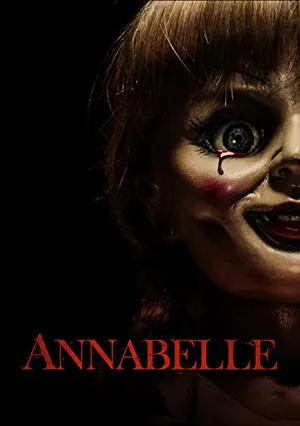
Annabelle (2014)
John has establish the perfect gift for his married woman, Mia: a beautiful, rare vintage doll. But Mia's delight with Annabelle the doll doesn't last long.
Information technology doesn't appear that the creepy stigma increasingly attached to dolls, nor the bevy of scary doll films, has done anything to really harm sales of dolls in the Us. While sales of dolls in 2014 were lower than they had been x years earlier, the figures were all the same in the billions of dollars – $2.32 billion to be verbal, outstripping sales of vehicular toys, activeness figures, craft, and costly toys, and second only to outdoors and sports toys sales. it hasn't put a damper on the secondhand and collectible doll market, where handmade porcelain dolls regularly fetch in the thousands of dollars. In September 2014, a rare Kämmer & Reinhardt doll from the early 1900s was auctioned off for an unbelievable £242,500 ($395,750); the written report suggested the buyernot seeAnnabelle, which was due to be released soon after.
The creepiness of dolls sometimes adds to their appeal; some doll makers are actively courting creepy, such equally this reborn artist who sells "monster" babies aslope regular babies, or the popular and scary Living Dead Dolls line. Because the fact is, peoplelike creepy. The same machinery that makes united states hyper-vigilant also keeps us interested: "We're fascinated and enthralled and little on edge considering nosotros don't know what comes next, but nosotros're non in any way paralyzed by it," muses Hogan. "We're more drawn into it, which I think it'south that drawing in or most being the under spell of wanting to find out what comes adjacent is what skilful storytellers exploit."
And, maybe, good doll makers, too?
Source: https://www.smithsonianmag.com/history/history-creepy-dolls-180955916/
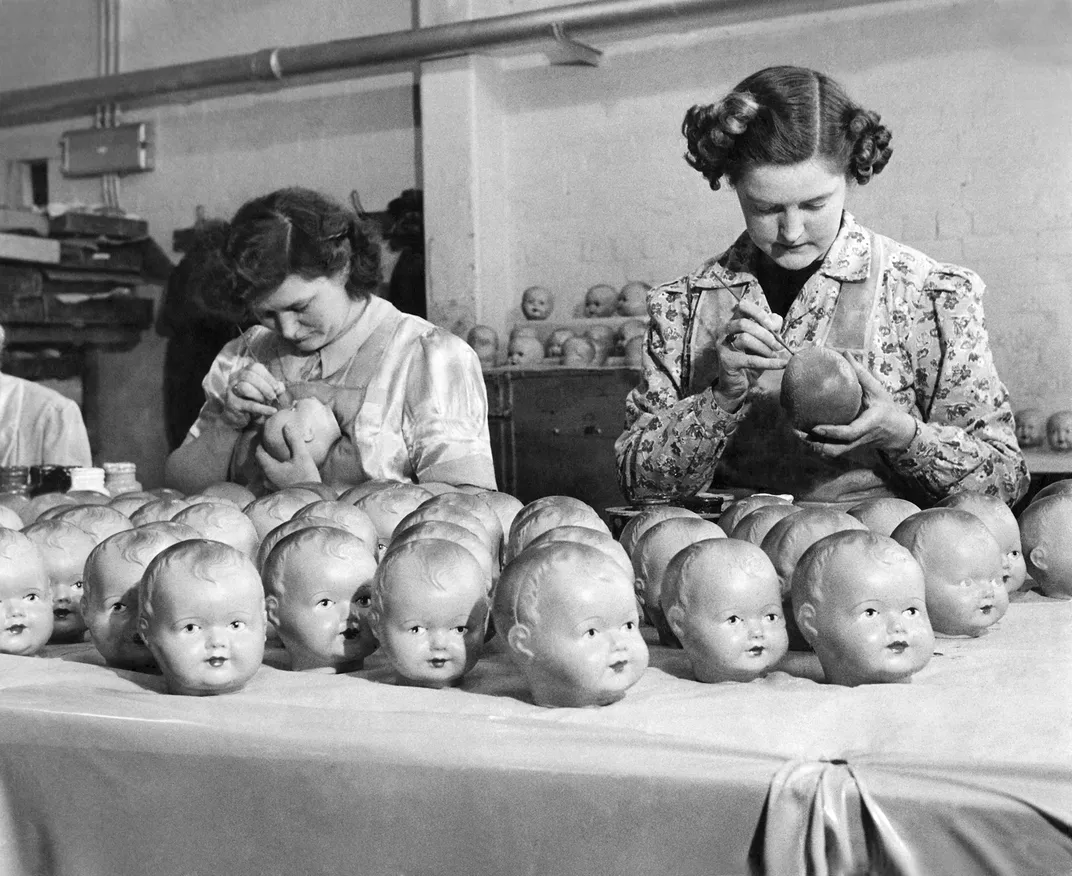
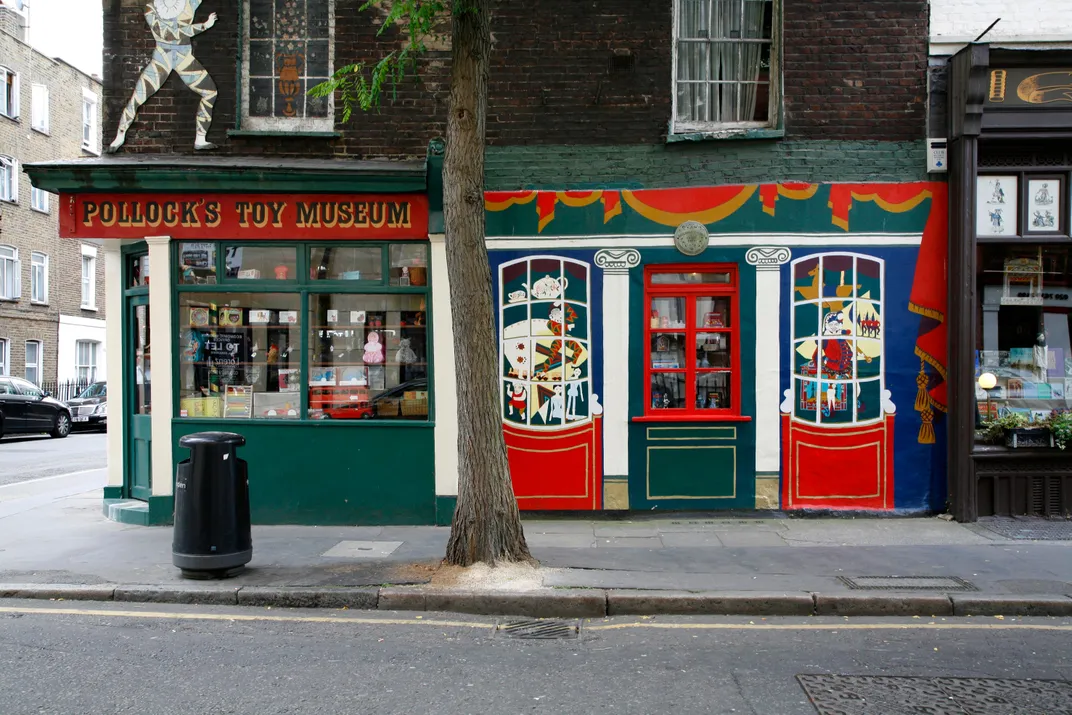
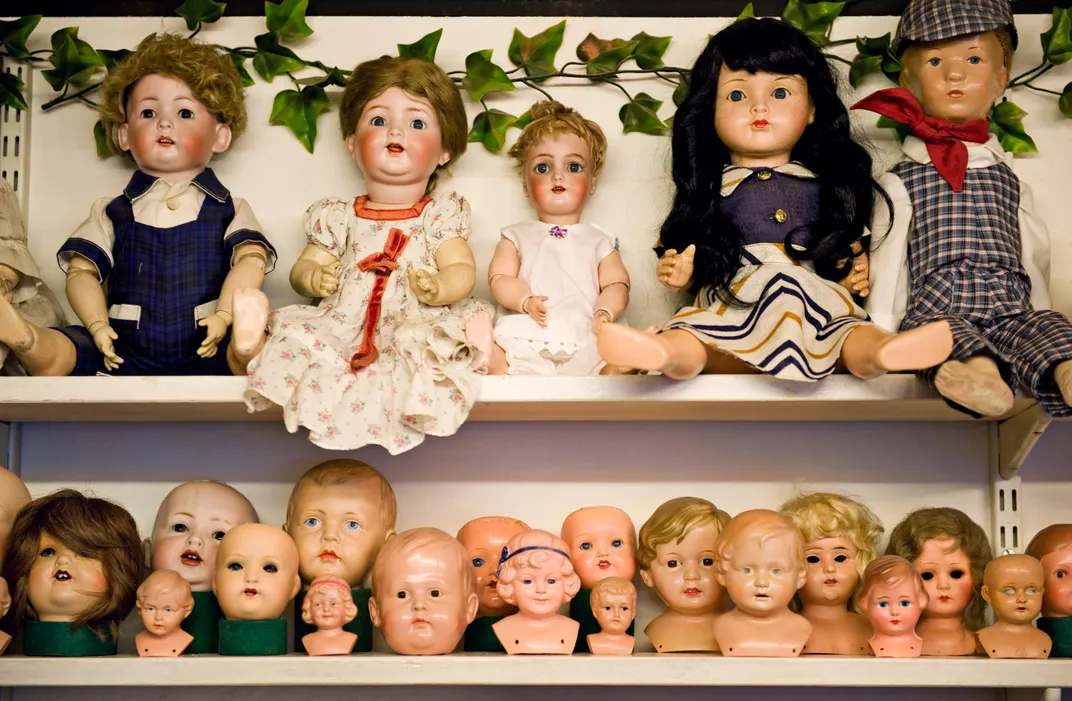

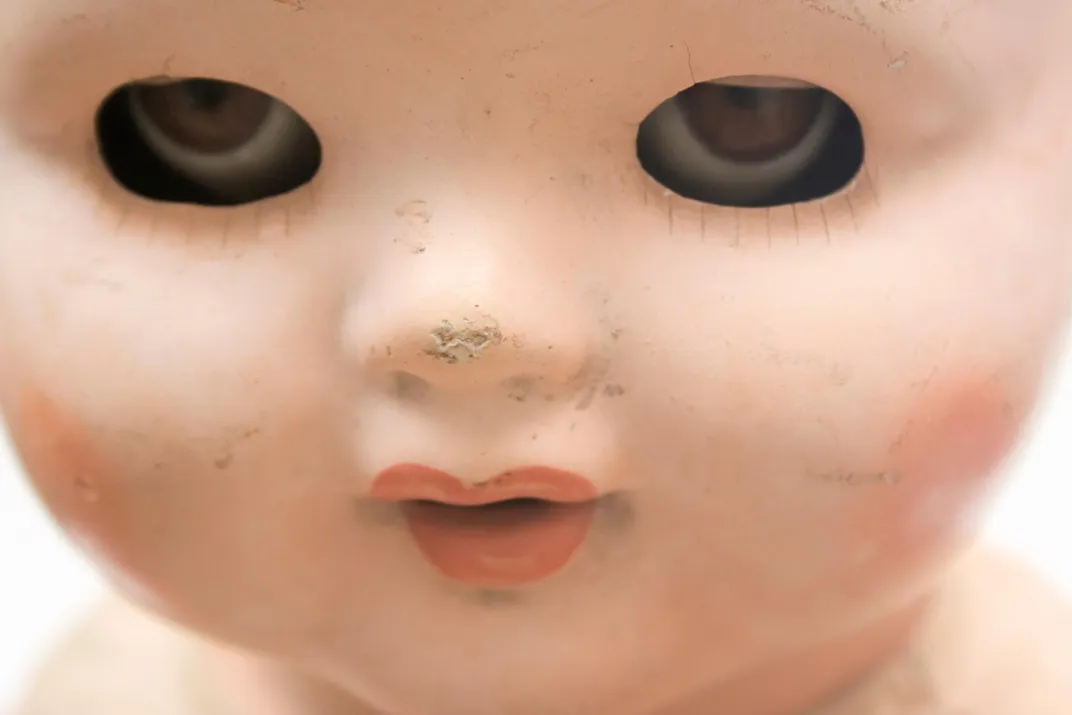
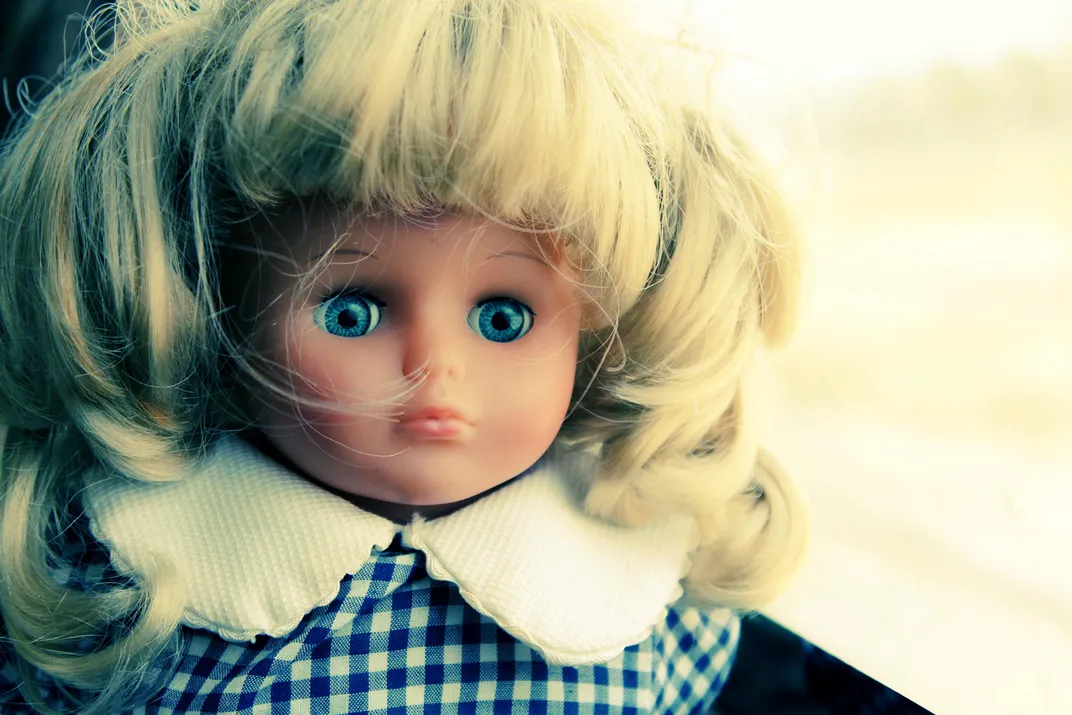
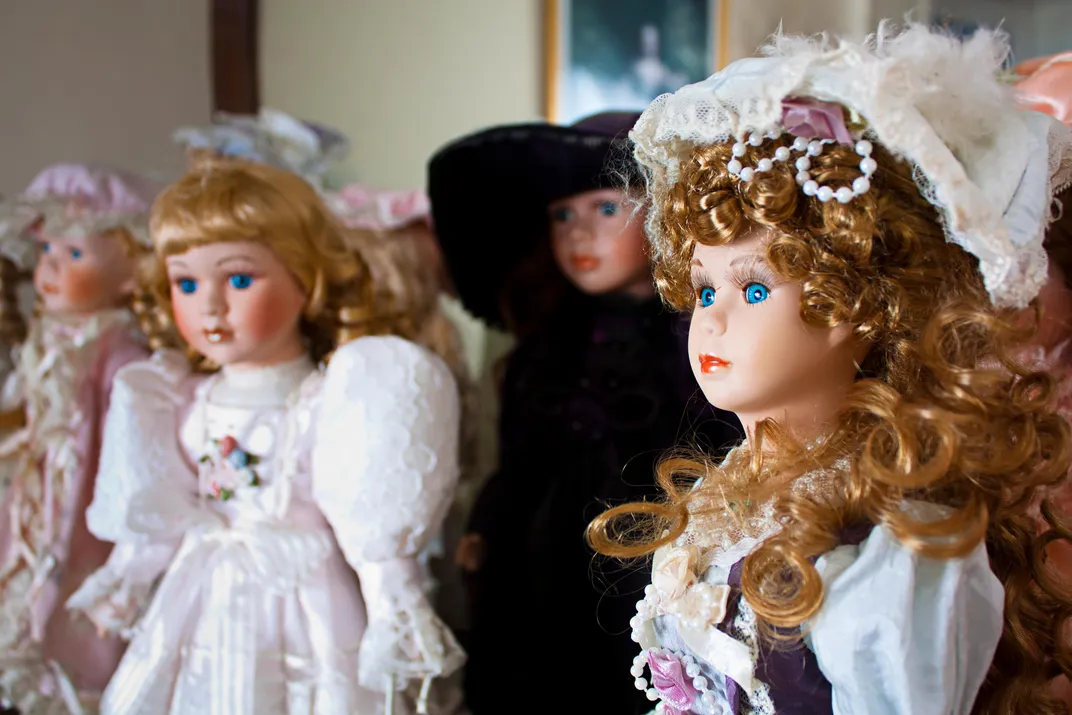
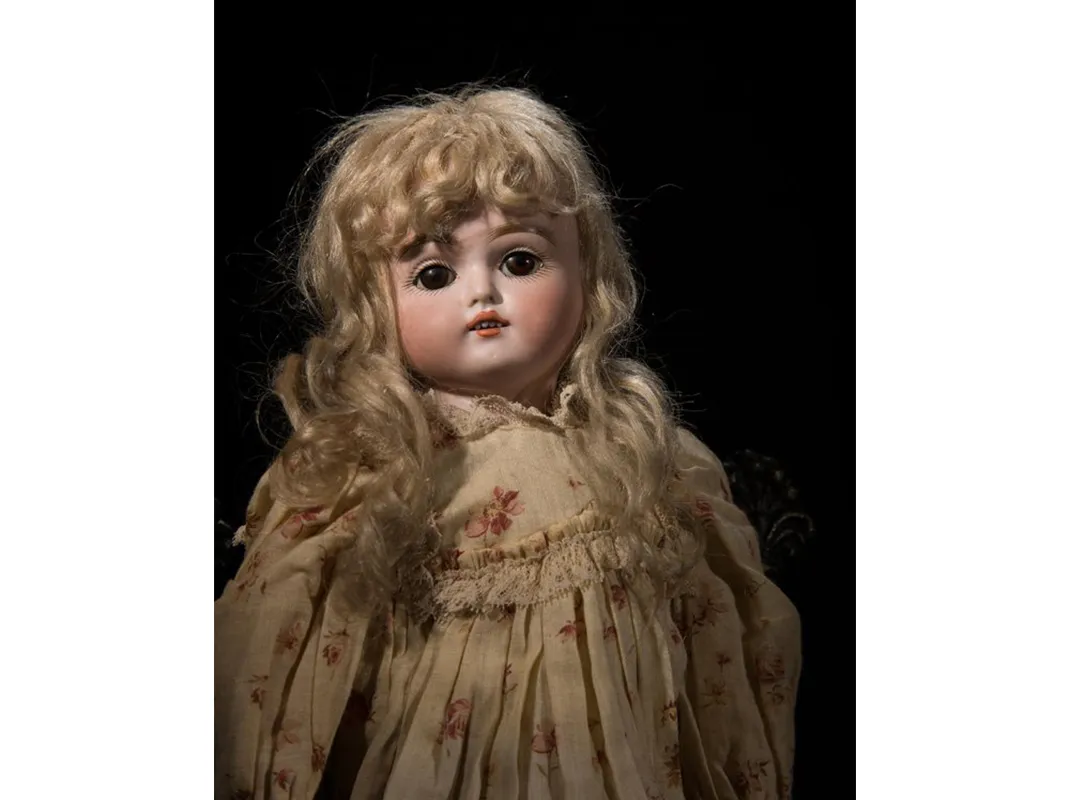
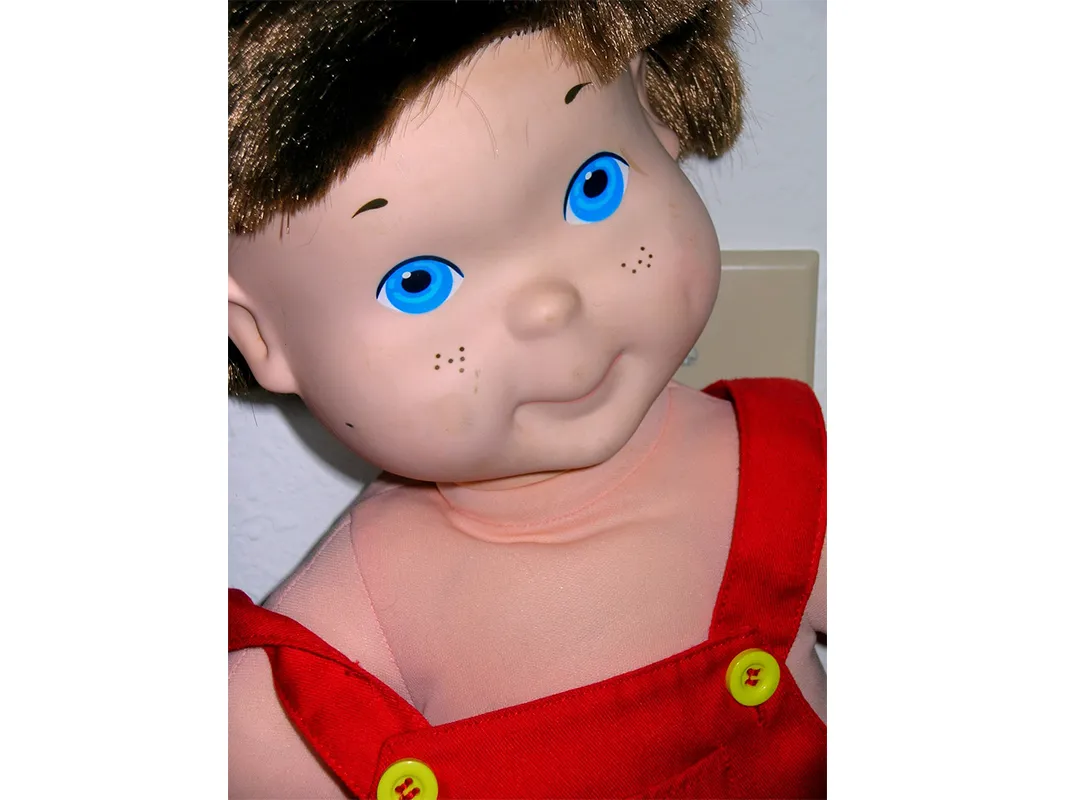
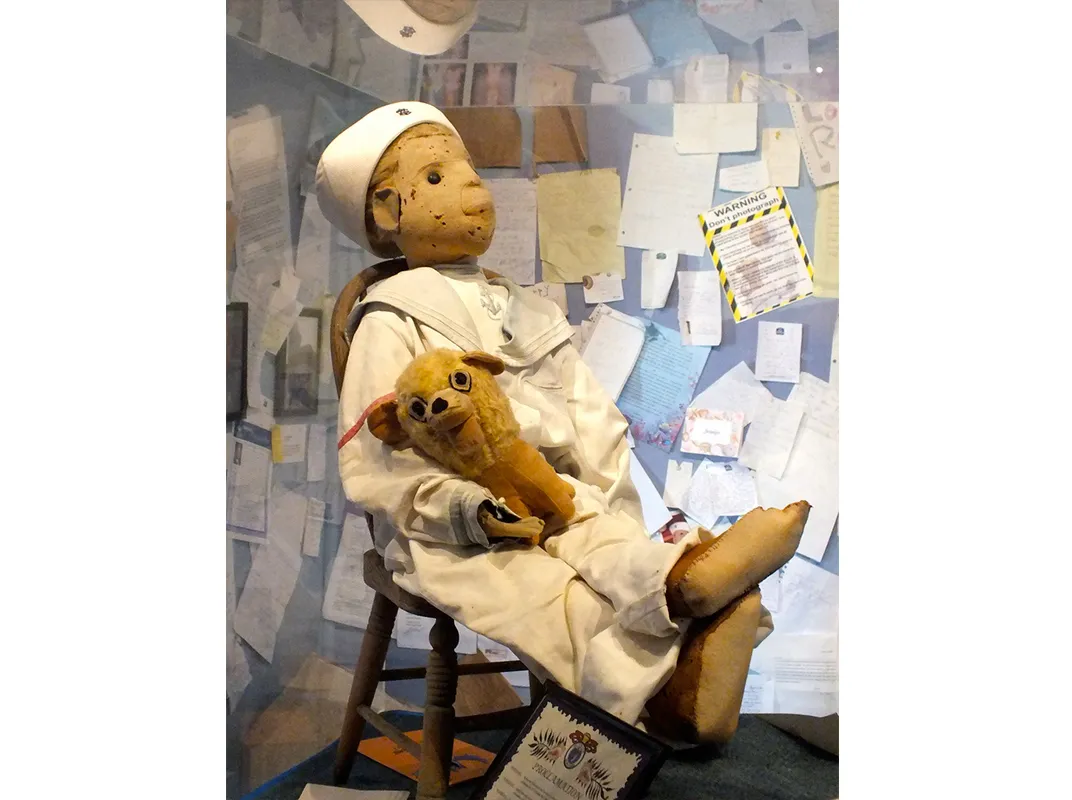
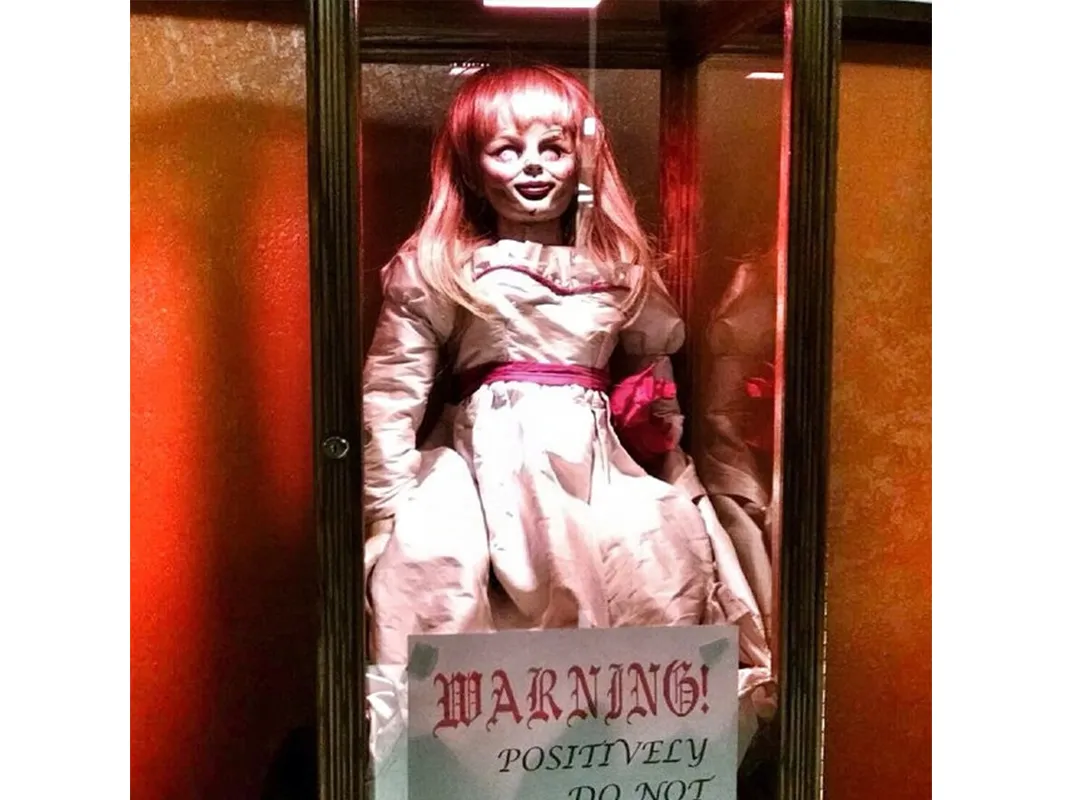
0 Response to "Art Creepy Victorian Teenage Girl in Bed Gown Long Black Hair"
Post a Comment